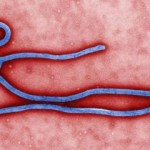outbreak
Homeopathy is quackery. There, I’ve fulfilled my normal requirement to start out all posts that I write having to do with homeopathy with a simple, declarative, and, most of all, true statement about what homeopathy is. I also like to mention briefly homeopathy’s two major “laws.” The first is the Law of Similars, a totally pseudoscientific “law” without basis in science that proclaims that the way to treat a symptom is to use a substance that causes that symptom in healthy people. The second “law,” of course, is the Law of Infinitesimals, which further states that the more you dilute a…
Ebola has surfaced again. After a hiatus of over a year without any new identified outbreaks, the virus has reemerged in western Africa, in the first-ever multi-country outbreak of the Zaire strain of Ebola. As of this writing, there have been 122 suspected cases of the disease in Guinea (24 laboratory-confirmed per the WHO) and 80 deaths (66% mortality rate). Most of these cases have been in Guekedou and Macenta in rural Guinea, about 35 miles apart, but what's really concerning is that at least 11 cases have also been identified in Guinea's capital of 2 million people, Conakry.…
Student guest post by McKenzie Steger
Off the southeastern coast of Australia lies a small island that in the 1700 and 1800’s was inhabited by the very worst of Europe’s criminals and is now the only natural home in the world to a species named after the devil himself. Decades later beginning in 1996 Tasmanian devils were going about their nocturnal lifestyle in normal devilish fashion feasting on small mammals and birds, finding mates and reproducing, occasionally fighting with one another and so on. (1) Just as criminals divvied up their booty hundreds of years before, the devils were…
Student guest post by Julia Wiederholt
I don’t think there is a single person that can claim to have never had the joyous experience (sarcasm intended) of suffering from the influenza. We all recognize the common symptoms that accompany this infectious little virus taking up residence in our bodies: the chills accompanying a fever, the total body ache, the nausea, and overall feeling of malaise. Typically this virus comes and goes within a week without serious side effects. When novel strains of the influenza pop up however, there can be more serious complications as your…
Student guest post by Molly Stafne
Nothing could be worse than watching your seven-year-old lying in a hospital bed fighting for his life after being diagnosed with hemolytic uremic syndrome. Unfortunately, Mary McGonigle-Martin experienced it first hand as her son, Chris, fought for his life after being poisoned by E. coli 0157:H7 found in contaminated raw milk. Like many mothers, Mary was coerced into believing the inaccurate “facts” given to her by the farm she purchased raw milk from. Too often across the US, parents are given incorrect information about the safety of the milk they drink…
Actions have consequences. No matter how much the person might want to try to hide from the consequences of one's actions, they frequently have a way of coming back, grabbing you by the neck, and letting you know they're there. We see it happening now in the U.K.
Fifteen years ago, British doctor Andrew Wakefield published a case series in The Lancet in which he described gastrointestinal symptoms in 12 autistic children who were treated at the Royal Free Hospital. His conclusion was that he had identified associated gastrointestinal disease and developmental regression in a group of…
I have a post up today at the Scientific American Guest blog, discussing how an earthquake and denial led to prairie dog plague. It details an outbreak of plague in Victorian San Francisco--the first time plague hit the United States--and the many downstream consequences of that outbreak (which began in 1900 and wasn't really contained until 1908). While the story is over at SciAm, here I wanted to talk more about why the outbreak became such a public health disaster.
The outbreak was first recognized by Dr. Joseph Kinyoun, a bacteriologist who had been, until his transfer to San Francisco,…
Uganda's latest Ebola outbreak, which I covered back in July, was just officially declared over on October 5th, a mere two weeks ago. Now today there is a report that three are dead from an outbreak of Marburg virus. That makes 4 Ebola outbreaks and now 2 Marburg outbreaks in the country since 2000.
Regular readers don't need to be told that I'm a bit obsessed with zoonotic disease. It's what I study, and it's a big part of what I teach. I run a Center devoted to the investigation of emerging diseases, and the vast majority of all emerging diseases are zoonotic. I have an ongoing series of posts collecting my writings on emerging diseases, and far too many papers in electronic or paper format in my office to count. Why the fascination? Zoonotic diseases have been responsible for many of mankind's great plagues--the Black Death, the 1918 "Spanish" flu pandemic, or more recently, HIV/AIDS…
August, 1976. A new infection was causing panic in Zaire. Hospitals became death zones, as both patients and medical staff succumbed to the disease. Reports of nightmarish symptoms trickled in to scientists in Europe and the US, who sent investigators to determine the cause and stem the epidemic. Concurrently, they would find out, the same thing was happening hundreds of miles to the north in Sudan. In all, 284 would be infected in that country, and another 358 in Zaire--over 600 cases (and almost 500 deaths) due to a mysterious new disease in just a few months' time.
The new agent was Ebola…
Uganda just can't catch a break. They've recently been hit with nodding disease, a mysterious syndrome where children repeatedly nod their heads and undergo serious seizures, typically leading to death. Now they're in the grips of another Ebola outbreak. This will be the fourth time the country has suffered through Ebola since 2000, when the virus was first found in the country:
The first occurred in August of 2000; the first case died in Gulu on the 17th of September. Despite an investigation, doctors were unable to determine where or how she had contracted the disease. Her death was…
With my colleague Greg Tinkler, I spent an afternoon last week at a local public library talking to kids about zombies:
The Zombie Apocalypse is coming. Will you be ready? University of Iowa epidemiologist Dr. Tara Smith will talk about how a zombie virus might spread and how you can prepare. Get a list of emergency supplies to go home and build your own zombie kit, just in case. Find out what to do when the zombies come from neuroscientist Dr. Greg Tinkler. As a last resort, if you can't beat them, join them. Disguise yourself as a zombie and chow down on brrraaaaiiins, then go home and…
This is the tenth of 16 student posts, guest-authored by Jean DeNapoli.
I own a small back yard flock of sheep and lambing season is the most exciting and rewarding time of the year. Nothing is more enjoyable than watching a lamb who takes a few wobbly steps and nurses for the first time as her mother nickers encouragement. Within a day, the lamb will be playing, bucking, running, and exploring her world.
Despite the pastoral wonders of the season, lambing is also inherently stressful. I must constantly check the barn to monitor for birthing problems and help out…
This is the eighth of 16 student posts, guest-authored by Michelle Formanek.
For many of us in the scientific world, particularly budding infectious disease epidemiologists like myself, the Plague (or, more dramatically, the “Black Death”) is a prime example of the rapid and devastating spread of an infectious disease. So devastating, in fact, that it wiped out nearly one-third of the population in Europe in the mid-1300’s. That’s roughly equal to 25 million people. It then persisted and has caused various outbreaks throughout history, most notably the Great Plague of London in…
This is the sixth of 16 student posts, guest-authored by Anna Lyons-Nace.
Natural…unprocessed…raw. These terms are often used by consumers, nutritionists and health experts to denote the most healthful, high-quality food options available for consumption. However, when pertaining to the recent increasing trend in raw milk consumption, can consumers be confident that they are choosing the safest and most healthful option? Statistical data and health studies would suggest otherwise.
Before we delve into the discussion any further, we should first establish what is…
This is the fourth of 16 student posts, guest-authored by Eric Wika.
Let's face it, it's a dangerous world to be a brain. The brain is so soft and squishy it cannot even support its own weight. That's right, even gravity itself is enough to take out an unprotected brain. Besides these passive threats, there are several factions out there that active try to damage your brain! Zombies are an ever present menace which wish to eat our brains. TV will rot our brains, drugs will fry our brains and bullies will offer to “beat your brains in”. It's no wonder mother nature had to come up with the…
This is the third of 16 student posts, guest-authored by Mary Egan.
Murine typhus has been in the news recently in Austin, TX, where in May of this year, two people were found to be positive and one died. This rings a number of alarm bells for me, since I live in Texas, and specifically in Austin. I know of another Austin veterinarian who got sick with murine typhus in 2008, when it was first noticed in Austin and investigated by the CDC. I was also working as a relief vet at the Town Lake Animal Center, the municipal shelter, and at the Austin Humane Society, the main…
The emergence of "new" diseases is a complicated issue. "New" diseases often just means "new to biomedical science." Viruses like Ebola and HIV were certainly circulating in Africa in animal reservoirs for decades, and probably millenia, before they came to the attention of physicians via human infections. Hantavirus in the American southwest has likely infected many people, causing pneumonia of unknown origin, before the Four Corners outbreak led to the eventual identification of the Sin Nombre virus. Encroachment of humans into new areas can bring them into contact with novel infectious…
Just a quick post as I'm in end-of-semester hell. Via Maryn McKenna on Twitter, the CDC has released a report of Campylobacter illnesses due to not food consumption, but because of castrating lambs. With their teeth.
On June 29, 2011, the Wyoming Department of Health was notified of two laboratory-confirmed cases of Campylobacter jejuni enteritis among persons working at a local sheep ranch. During June, two men had reported onset of symptoms compatible with campylobacteriosis. Both patients had diarrhea, and one also had abdominal cramps, fever, nausea, and vomiting. One patient was…
While "flesh-eating infections" caused by the group A streptococcus (Streptococcus pyogenes) may grab more headlines today, one hundred and fifty years ago, the best known and most dreaded form of streptococcal infection was scarlet fever. Simply hearing the name of this disease, and knowing that it was present in the community, was enough to strike fear into the hearts of those living in Victorian-era United States and Europe. This disease, even when not deadly, caused large amounts of suffering to those infected. In the worst cases, all of a family's children were killed in a matter of a…


